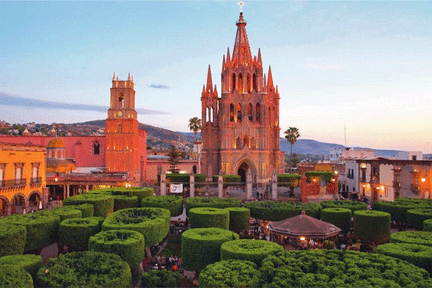Why expats and tourists should learn the true histories of their dream destinations
News Category: News, Community News, and General Discussion
-
Around 5,000 Canadians call San Miguel de Allende in Mexico their second home. How many of them are aware of the city’s past and present-day inequalities?
Published November 15, 2023
By Dennis Gruending
Last winter, my wife and I spent two weeks in San Miguel de Allende, an expatriate and retirement haven in central Mexico that Condé Nast Traveler named the best small city in the world. San Miguel is indeed attractive: it is nestled in a mountain valley, its winters are warm and predictable, and its enchanting city centre has been designated a UNESCO World Heritage Site since 2008. Unfortunately, the city as it exists today both marginalizes the past and conceals the present.
Beginning in the 1940s, local elites and a few expats began creating an image of San Miguel as an unspoiled remnant of colonial Mexico; in reality, much of the city’s “colonial” architecture are renovations that were made in the late 19th century. Today, San Miguel’s tourist narrative celebrates its involvement in the struggle for independence from Spain in the early 1800s, but the Mexican Revolution, which occurred 100 years later, is ignored. The revolution’s central promise was to redistribute land to peasants. As a result, San Miguel became a centre of the violent opposition led by big ranchers and the church — a development that promoters might want to omit.
With the exception of a cringe-worthy mural located in a side altar of the city’s grand La Parroquia church depicting Indigenous people kneeling before a European friar, very little in San Miguel recognizes its original history. In the 1500s, Indigenous people in the area fought off Spanish interlopers but were eventually overrun and used as slave labour. Do expats know this history?
San Miguel is now home to about 175,000 people. Ten percent are expats, of which Canadians make up about 5,000 residents. These expats are mostly older people with money, and the city has a thriving cultural industry to serve them. Author Margaret Atwood, for instance, was in town for a literary event the night before we arrived.
Tourism is the main industry in San Miguel, as it is in many places around the world. It brings jobs — albeit precarious ones — and injects money into the community. But it can also wash over local cultures, reinforce inequality and create a distorted use of resources.
Even the array of charities founded by expats — for poor women and children, seniors, animals and so on — might be missing the point. As Lisa Pinley Covert, an associate professor of history at the College of Charleston in South Carolina who has researched tourism in Mexico extensively, writes: “High income gentrification is reliant upon a supply of low wage labour.” Most expats who own or rent homes employ cleaners, gardeners, cooks and other service employees. The salaries and working conditions of these jobs rely upon the whim of employers.
I have been to San Miguel twice and hope to return, but I also want to avoid indulging in a sanitized version of an imagined past and a heavenly present. We who are privileged enough to travel owe it to the good people we are visiting.
Dennis Gruending is an author, blogger and former member of Parliament in Ottawa.
This article first appeared in Broadview with the title “All that Glitter.”


Leave a Reply